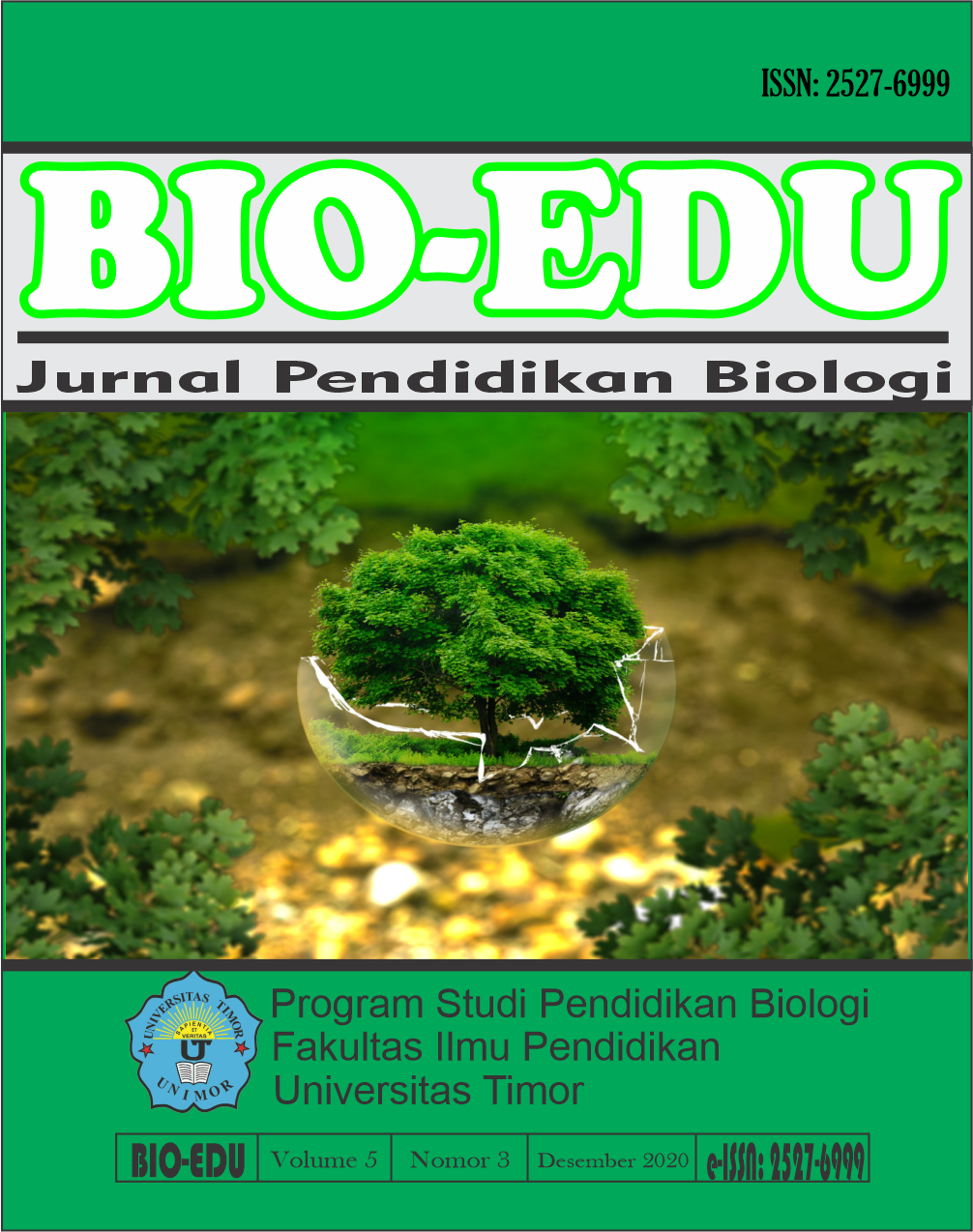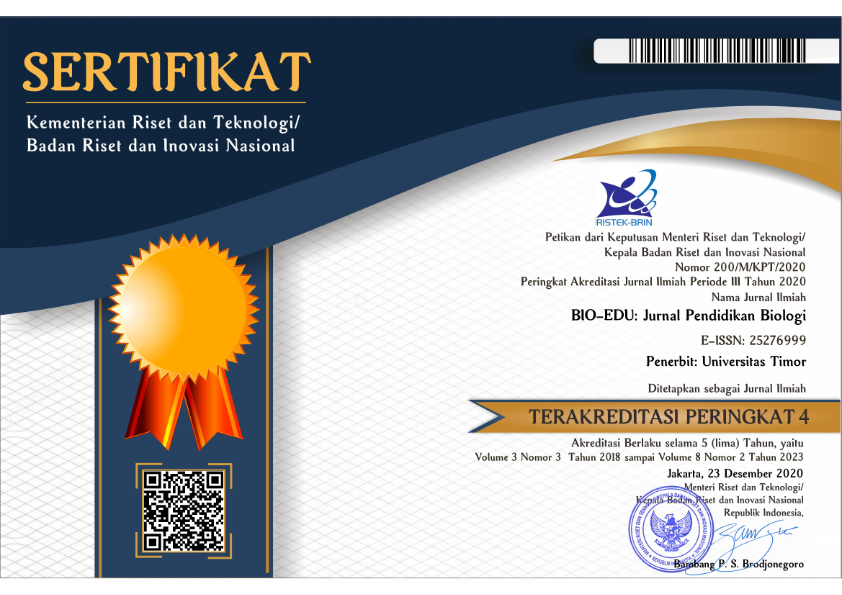Intraspecies Relationship of Croton (Codiaeum variegatum L.) in South Parigi District Based on Phenetic Analysis
DOI:
https://doi.org/10.32938/jbe.v5i3.733Keywords:
Relationship; intraspecies; croton plant; Parigi Moutong; PheneticAbstract
Croton is one of the horticultural plant commodities that is important among the community because it plays a role in adding beauty and beauty and functions as a pollutant absorbent plant. This reseach is aims to describe the kinship relationship between croton cultivars. The research was conducted in May 2020. The type of research used is descriptive exploratory. The research sample used was eight croton cultivars with five individuals in each cultivar. The plant characters measured included 14 morphometric characters, six meristic characters, and 81 qualitative characters. Kinship analysis was processed using the File Editor Program (PFE) software and the Multivariate Statistical Package (MVSP). The amount of the similarity index is calculated using the Simple Matching Coefficient method, and the determination of kinship using the UPGMA algorithm. The results showed that eight cultivars were obtained and formed 3 clusters and two sub-clusters. The closest kinship relationship is between croton lele and croton with a thousand stars which are supported by a similarity index of 0.766 and the farthest relationship occurs between node 6 (croton drill, chips, crackers, catfish, thousand stars and swallow) and node 3 (croton sheep and turtles) ) which is supported by a similarity index of 0.6.
Downloads
Published
Issue
Section
License
The Authors submitting a manuscript do so on the understanding that if accepted for publication, the copyright of the article shall be assigned to BIO-EDU: Jurnal Pendidikan Biologi and Departement of Biology Education, Universitas Timor as the publisher of the journal. Copyright encompasses rights to reproduce and deliver the article in all form and media, including reprints, photographs, microfilms, and any other similar reproductions, as well as translations.
BIO-EDU journal and Departement Biology Education, Universitas Timor, and the Editors make every effort to ensure that no wrong or misleading data, opinions, or statements be published in the journal. In any way, the contents of the articles and advertisements published in BIO-EDU are the sole and responsibility of their respective authors and advertisers.
Users of this website will be licensed to use materials from this website following the Creative Commons Attribution-ShareAlike 4.0 International License.



















